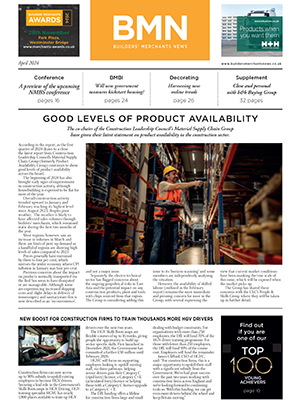The timber frame market lost £1.5bn in sales due to the recession according to a new report from MTW Research, though demand is strengthening in late 2013 with housebuilding and commercial construction set to quickly recover lost ground in 2014.
While more than 40% of timber frame suppliers made a loss in 2012, the report reveals that future prospects are more positive for the timber frame construction market, with growth this year set to strengthen in 2014 driven by the burgeoning housebuilding market. Nevertheless, the timber frame industry still has some way to go in terms of recovery as sales and profitability remains at historically low levels according to MTW.
The 200-page report discusses market trends and prospects for the key timber frame market sectors, as well as analysing the industry in terms of financial performance since 2007. Discussing the findings, MTW’s director Mark Waddy pointed to “…More than £1.5bn of lost sales in the timber frame market due to the 2008/9 recession and sustained downturn in building activity. This resulted in a significant overcapacity in the industry, with up to 40% of the timber frame market currently underutilised as volumes contracted by around 30% in the last few years.”
Based on financials from 80% of the industry, the report forecasts healthy growth in most sectors, with profitability returning as volumes rise. However, sector performance will vary considerably, with open panel forecast to under perform in the near to medium term, for example. Nevertheless, as demand patterns return to growth, MTW suggests that pricing pressures will ease, feeding through into a number of growing market opportunities identified through the research.
The study also involved a review of the key end use sectors, with findings providing both optimism and presenting some degree of caution for the timber frame industry. One such area currently dampening growth prospects is in newbuild social housing, which incorporates a higher proportion of timber frame than the private sector and is therefore a key driver in the market.
MTW’s analysis found that demand from the social housing market has declined by 20% in the last four years as budgets have been slashed from £8bn to £4.5bn until 2015. The findings succinctly underline the need for clearly defined growth strategies by timber frame suppliers in order to grow profitability in the current trading environment.
The report also reviews the commercial timber frame construction in detail, with forecasts to 2017. While activity in this sector remains much lower than that in the timber frame housebuilding market, the report identifies some key opportunities for growth as well as providing a generally positive outlook for timber construction. In terms of value, MTW’s forecast models suggest a 100% increase in non-domestic timber frame construction in the next few years, underpinning a growing sense of optimism in the timber industry generally.
Margin erosion remains prevalent in some product sectors of the timber frame market according to the report, though this pressure is easing as market conditions are changing in late 2013. Despite an improving outlook, some 10% of the timber frame industry currently have either a ‘low’ or ‘at risk’ credit rating in late 2013 and more than half the industry have experienced sales declines in the last 12 months, suggesting that some suppliers are still unable to see the wood for the trees.






